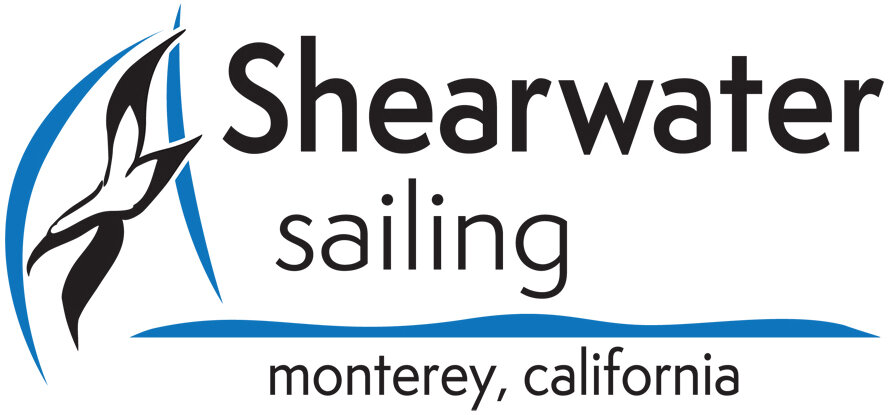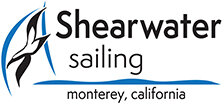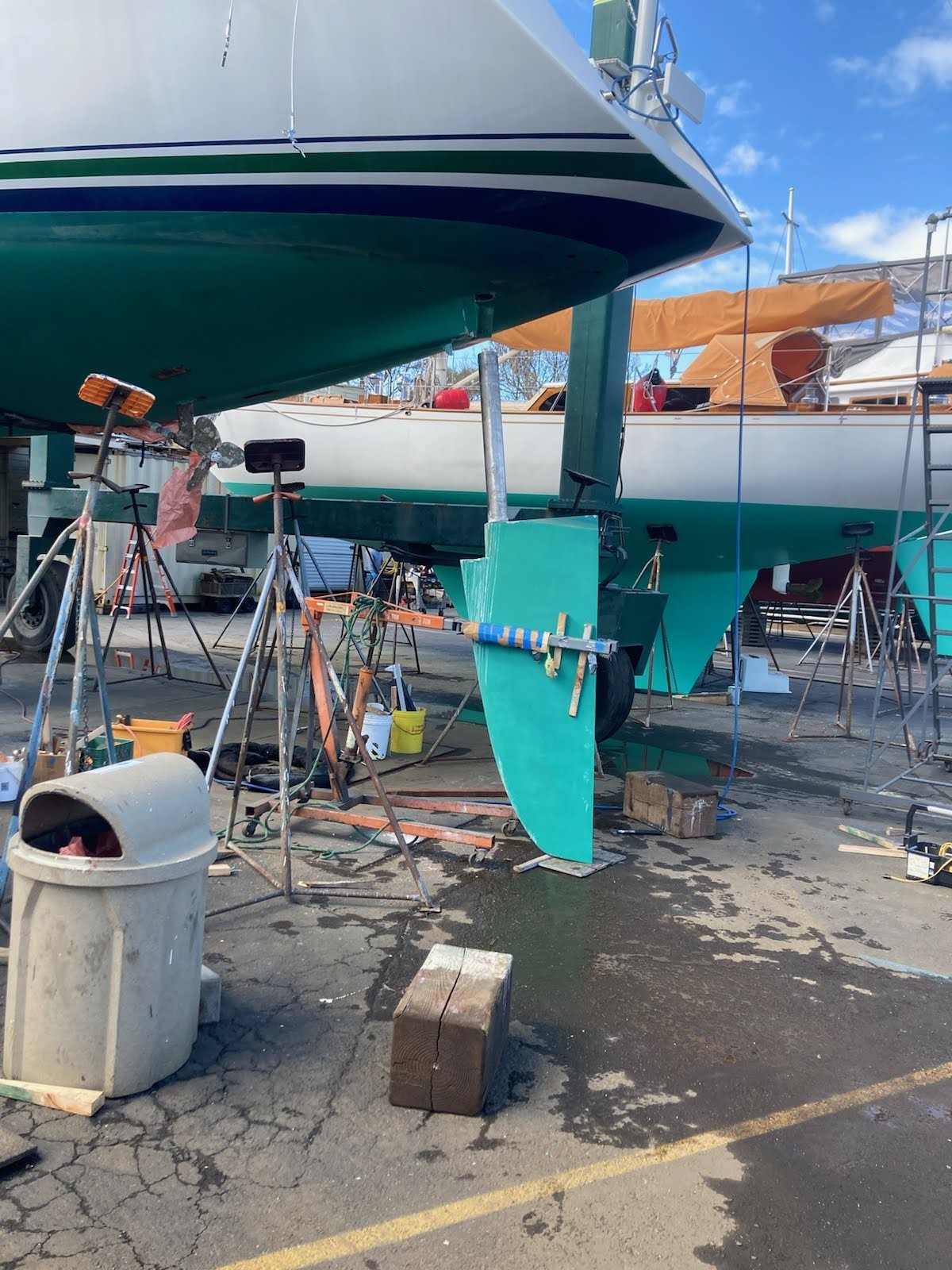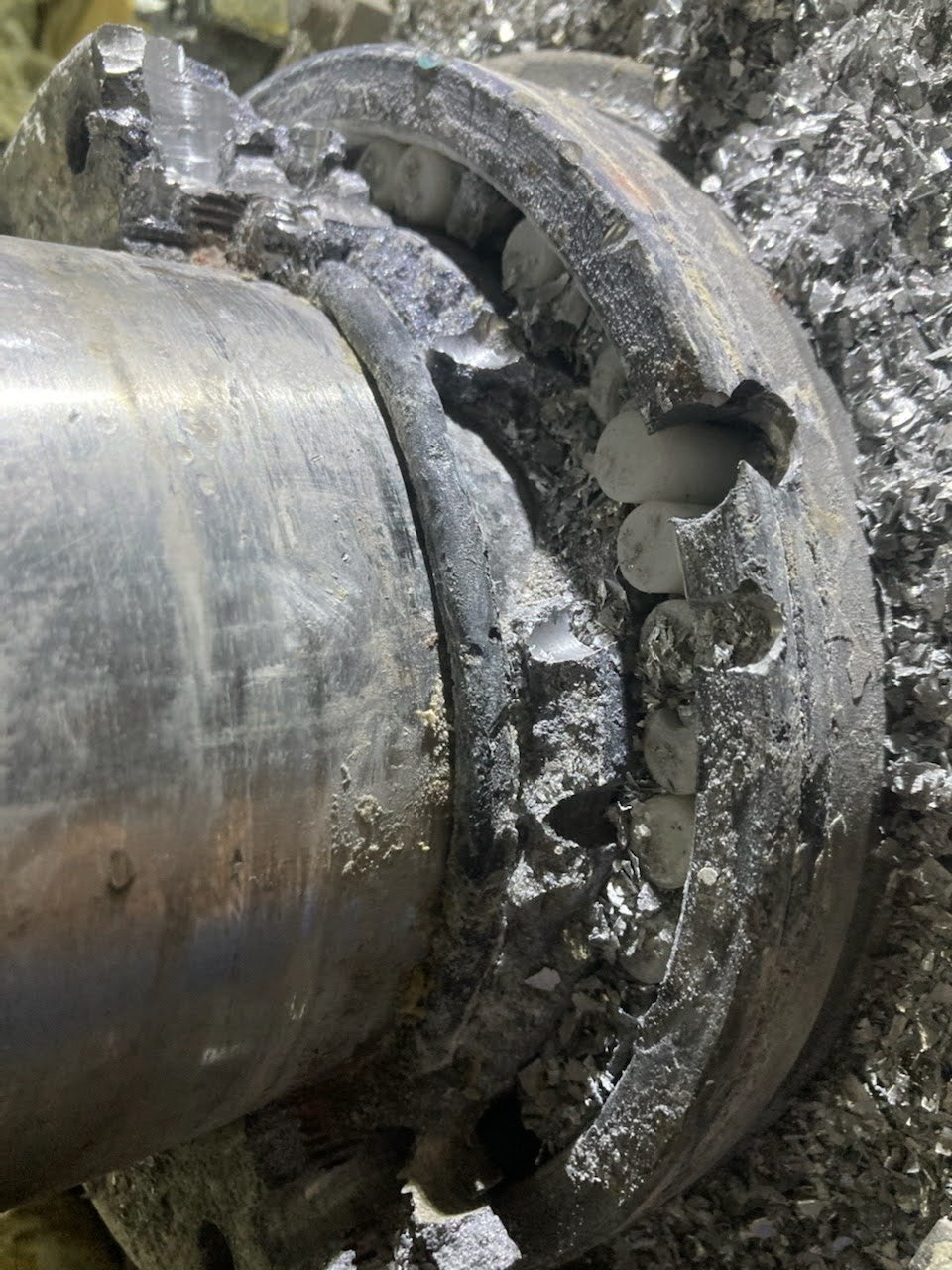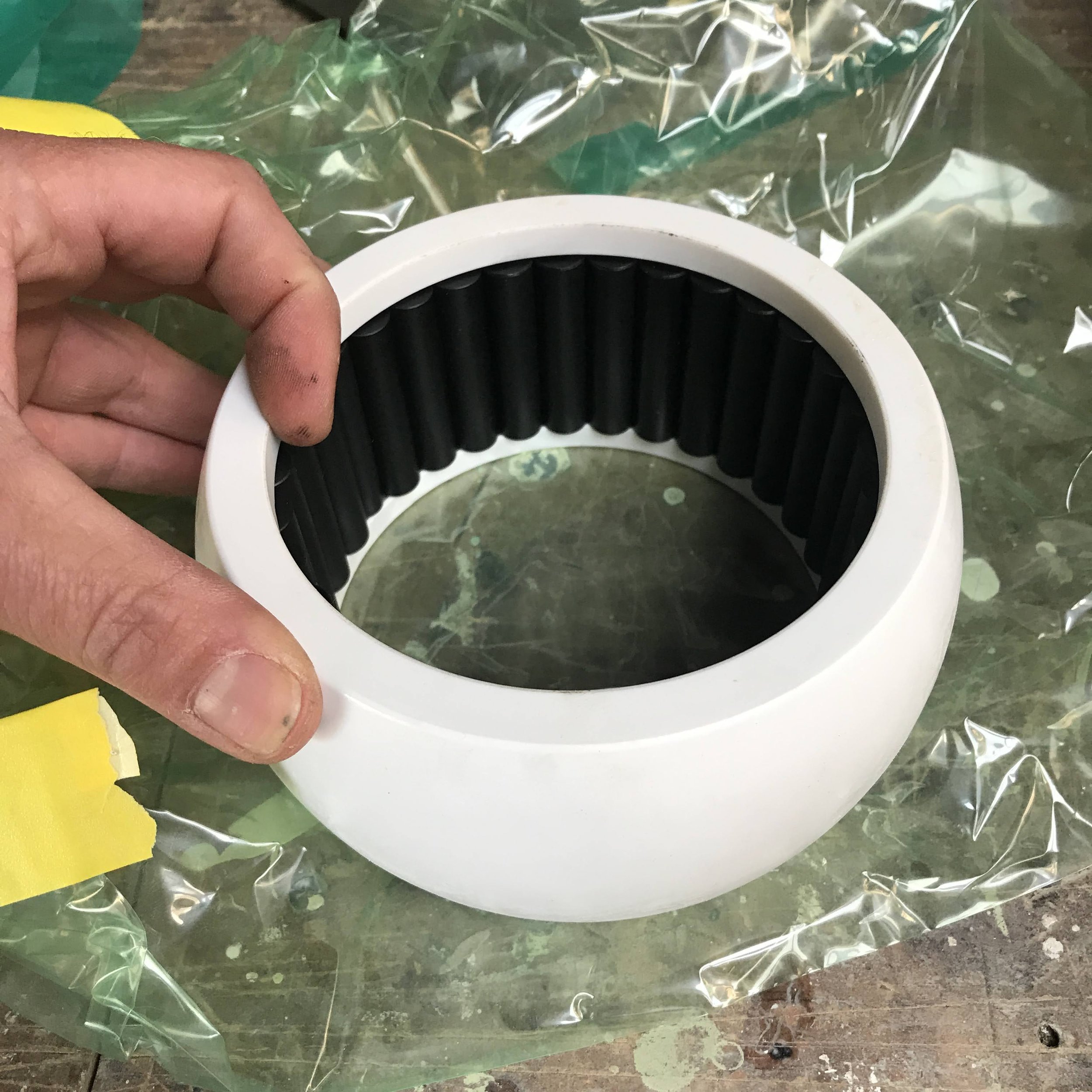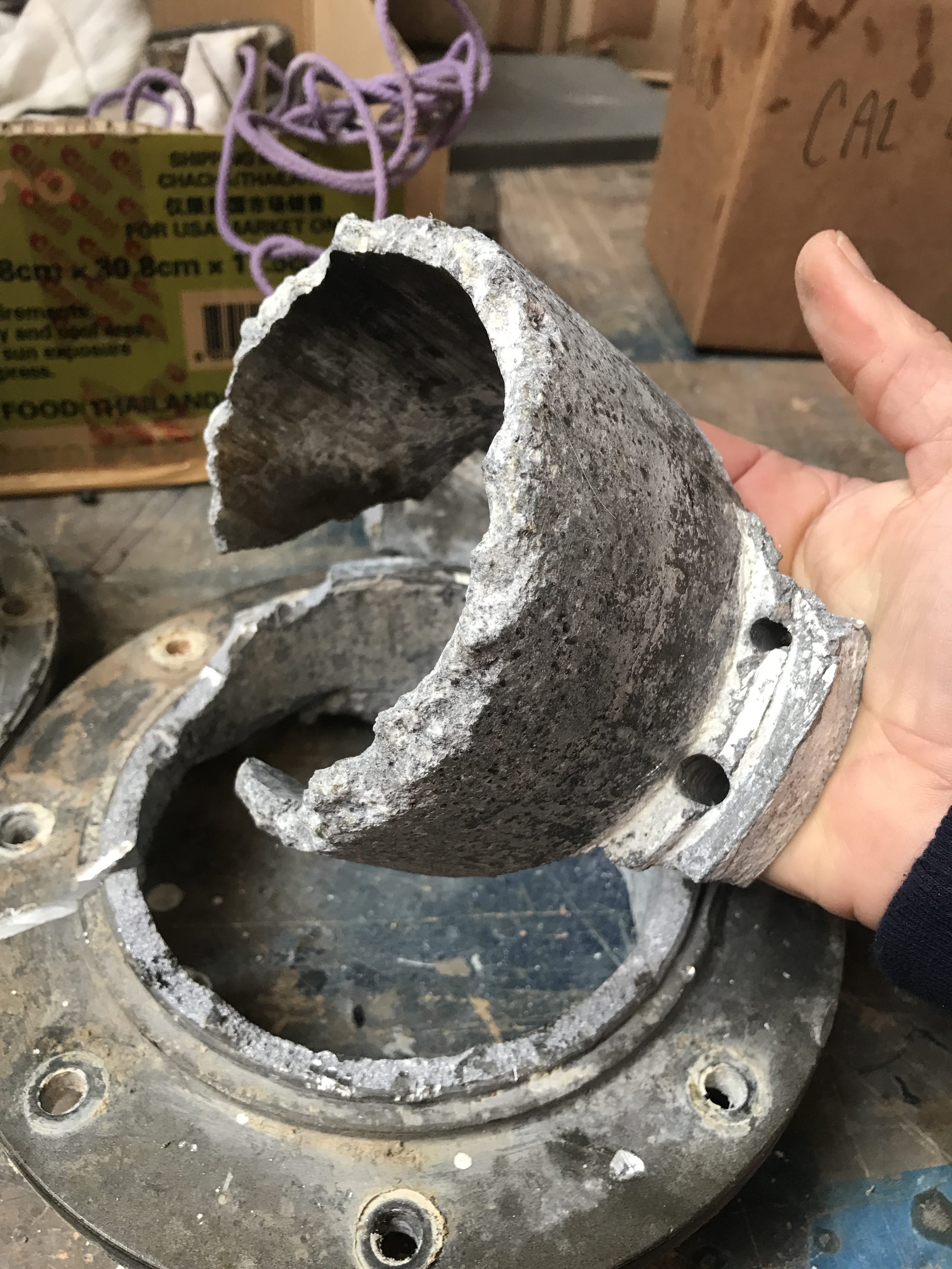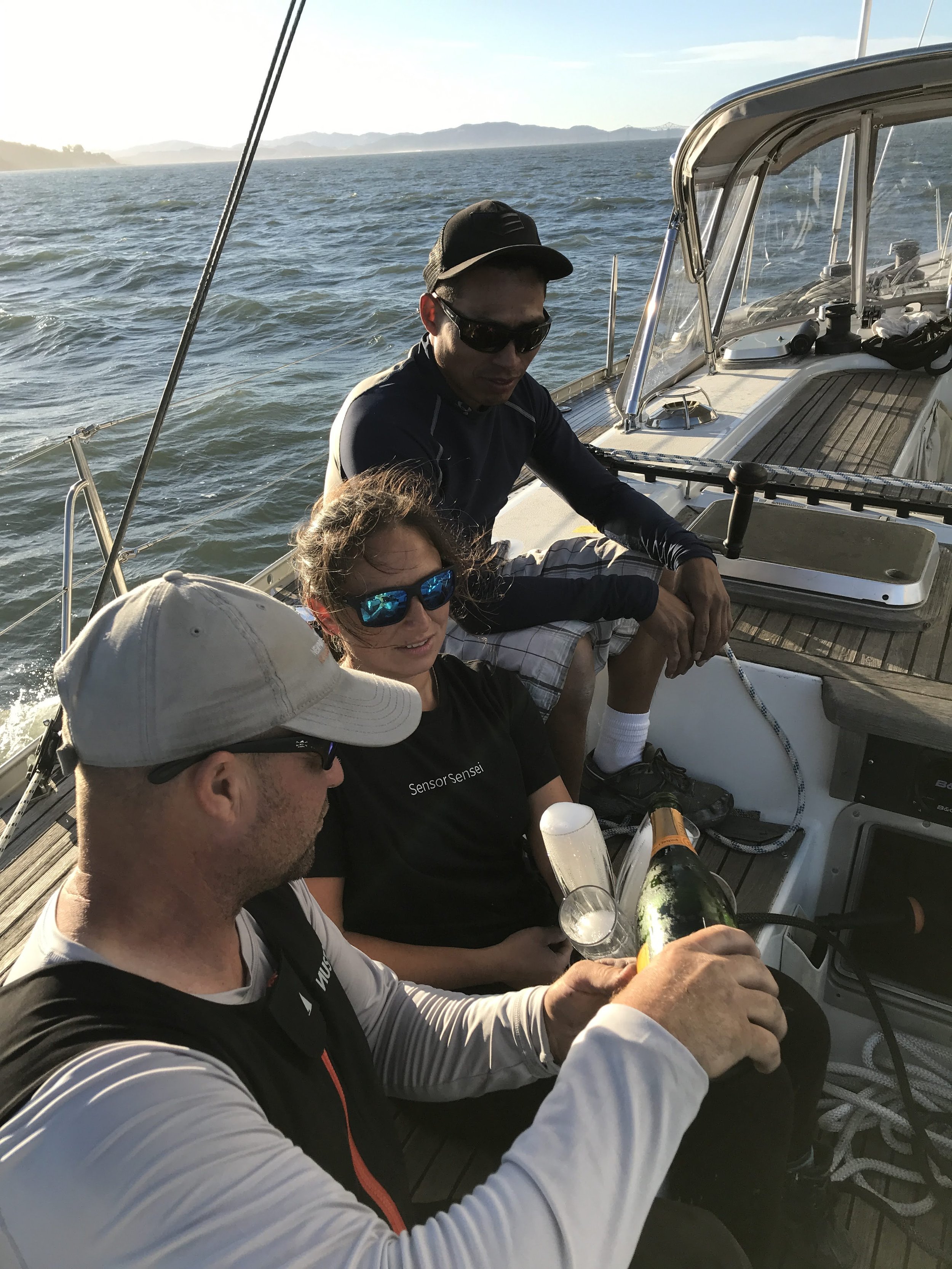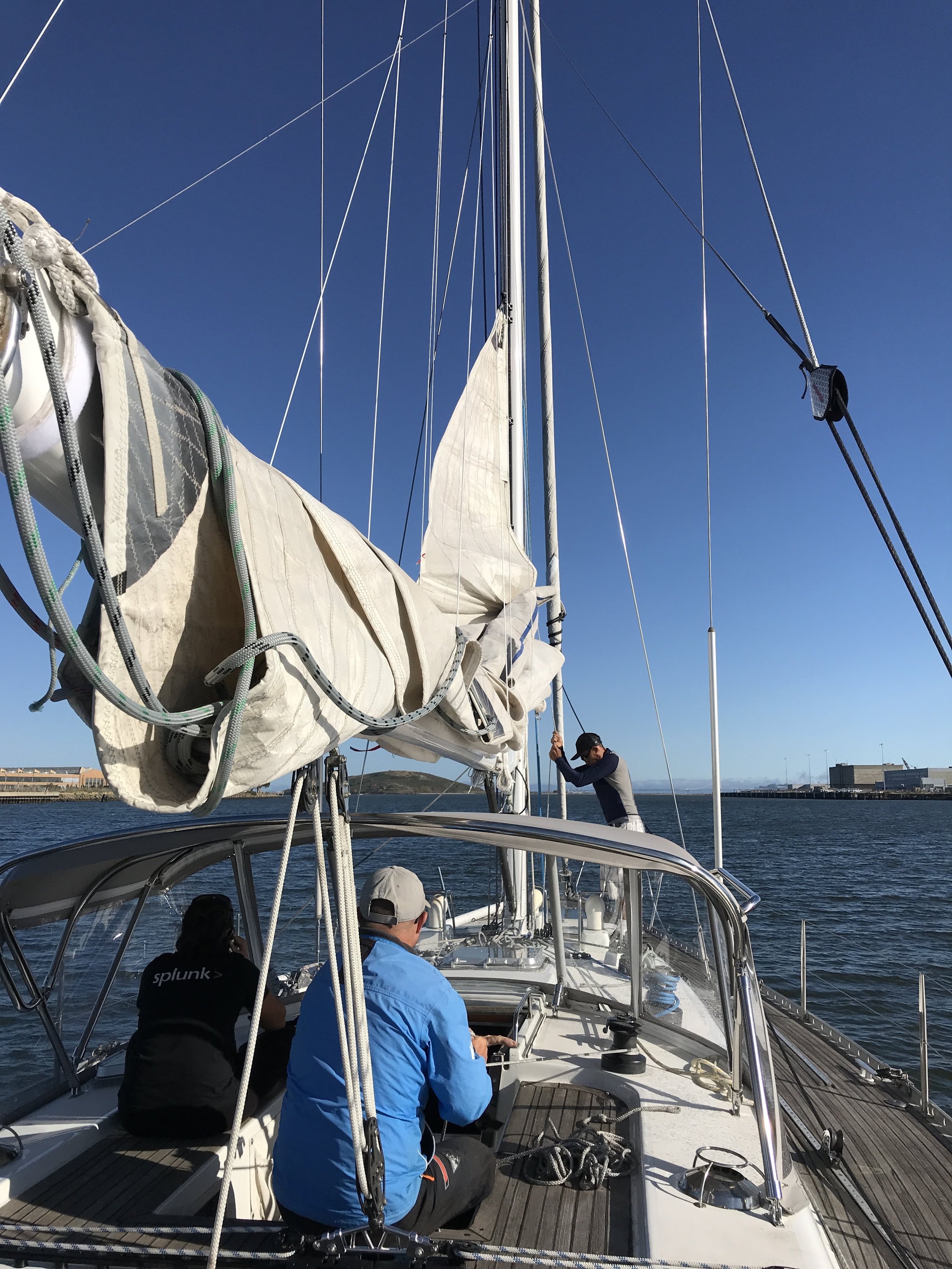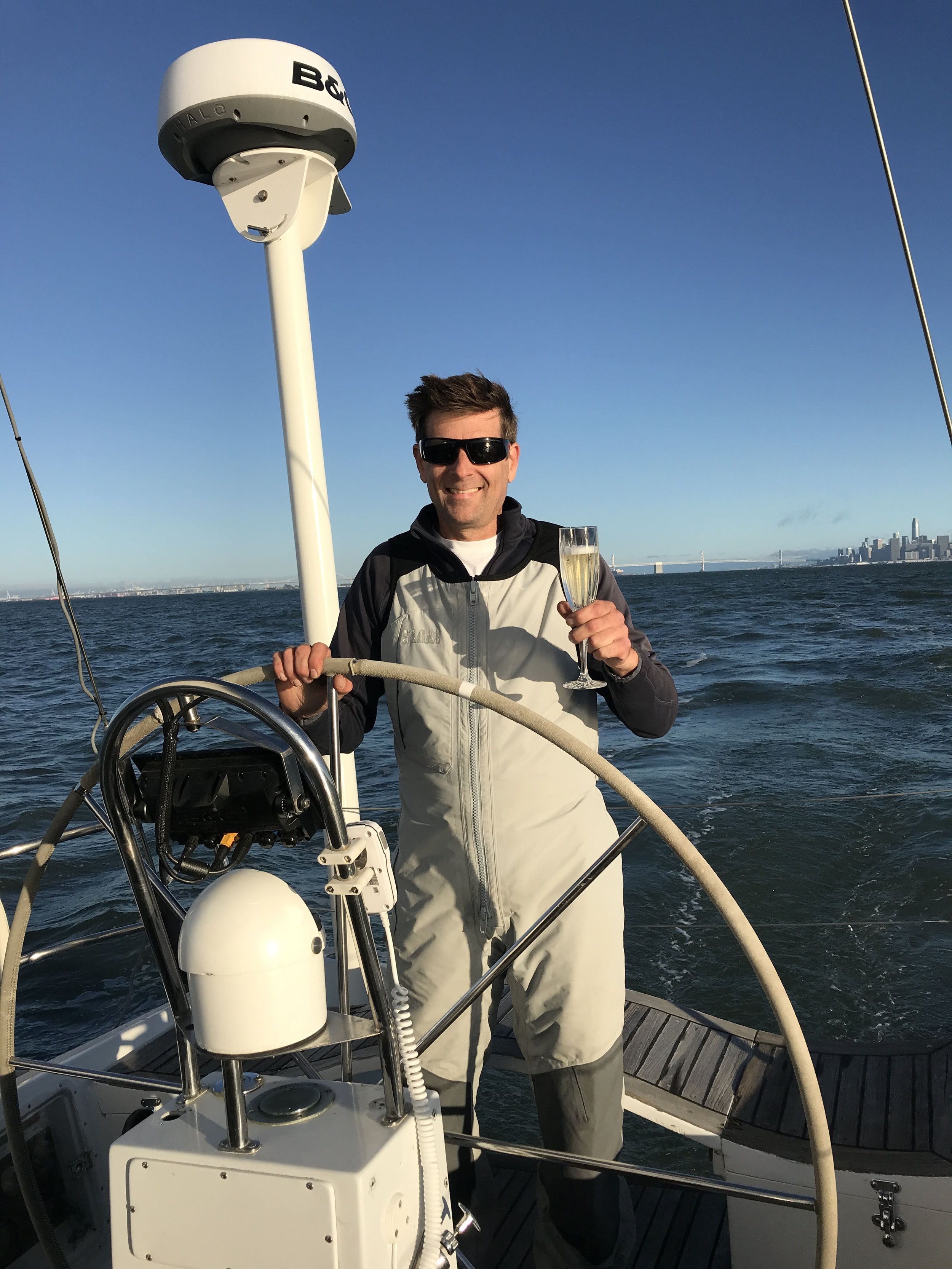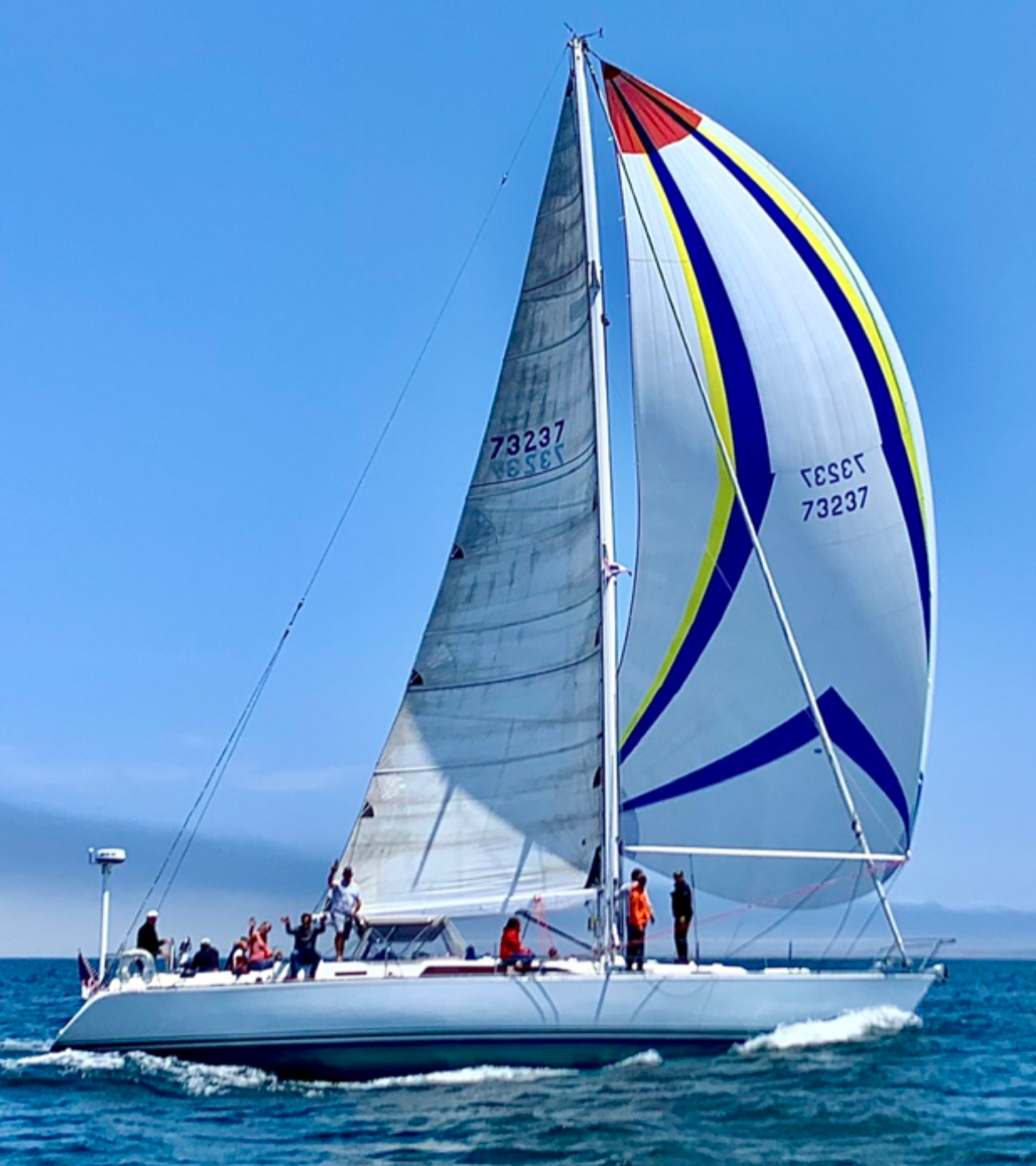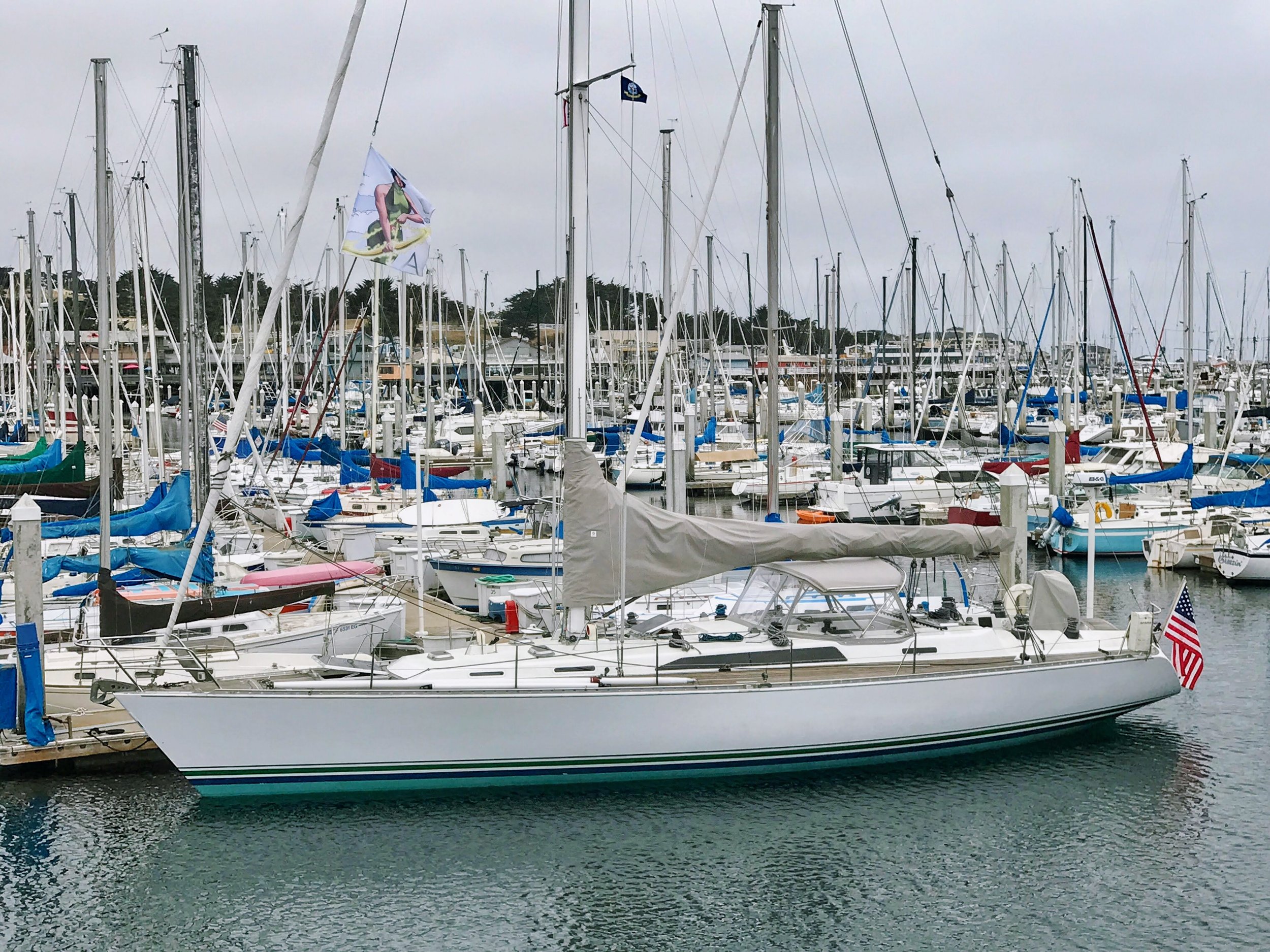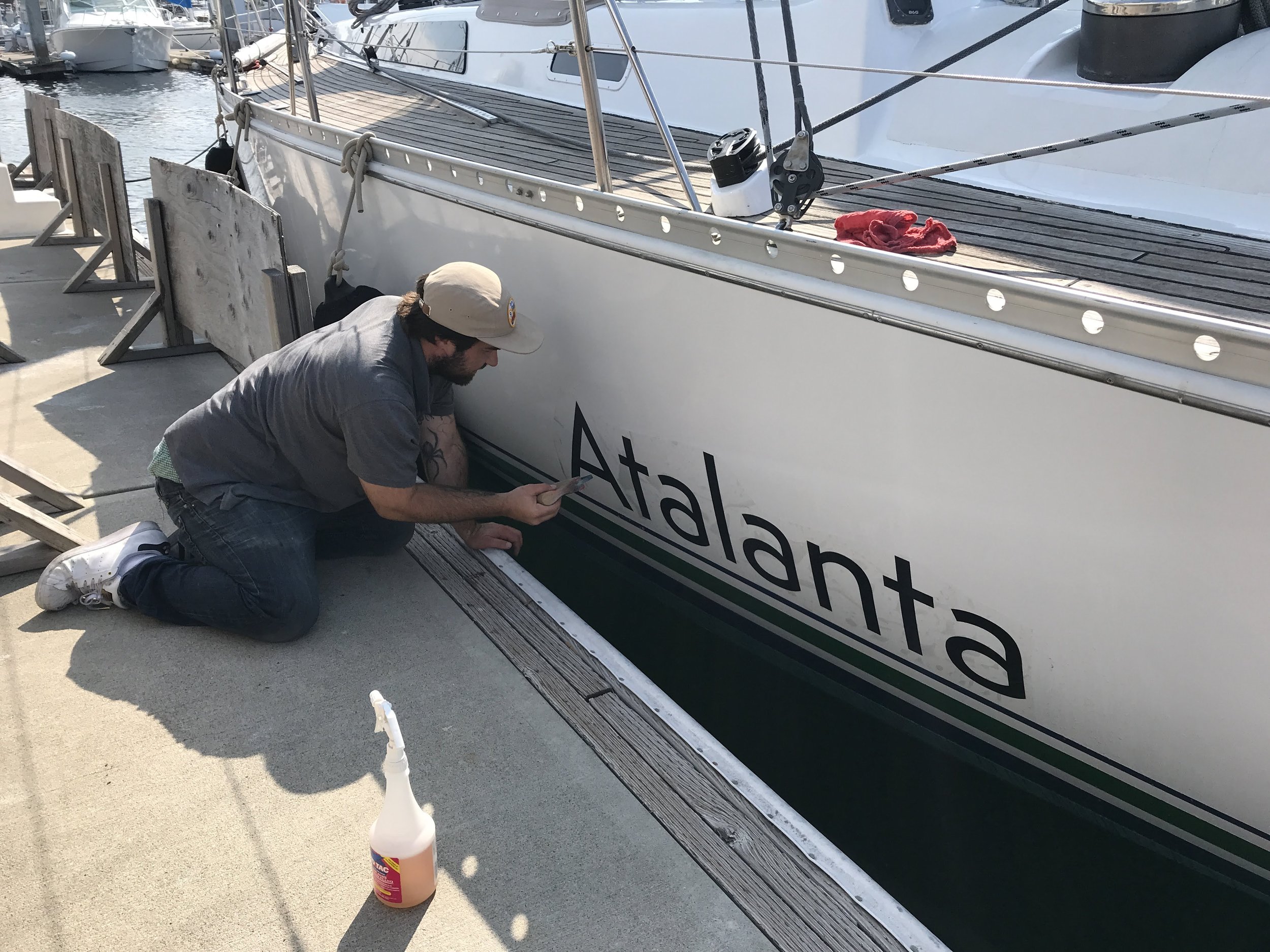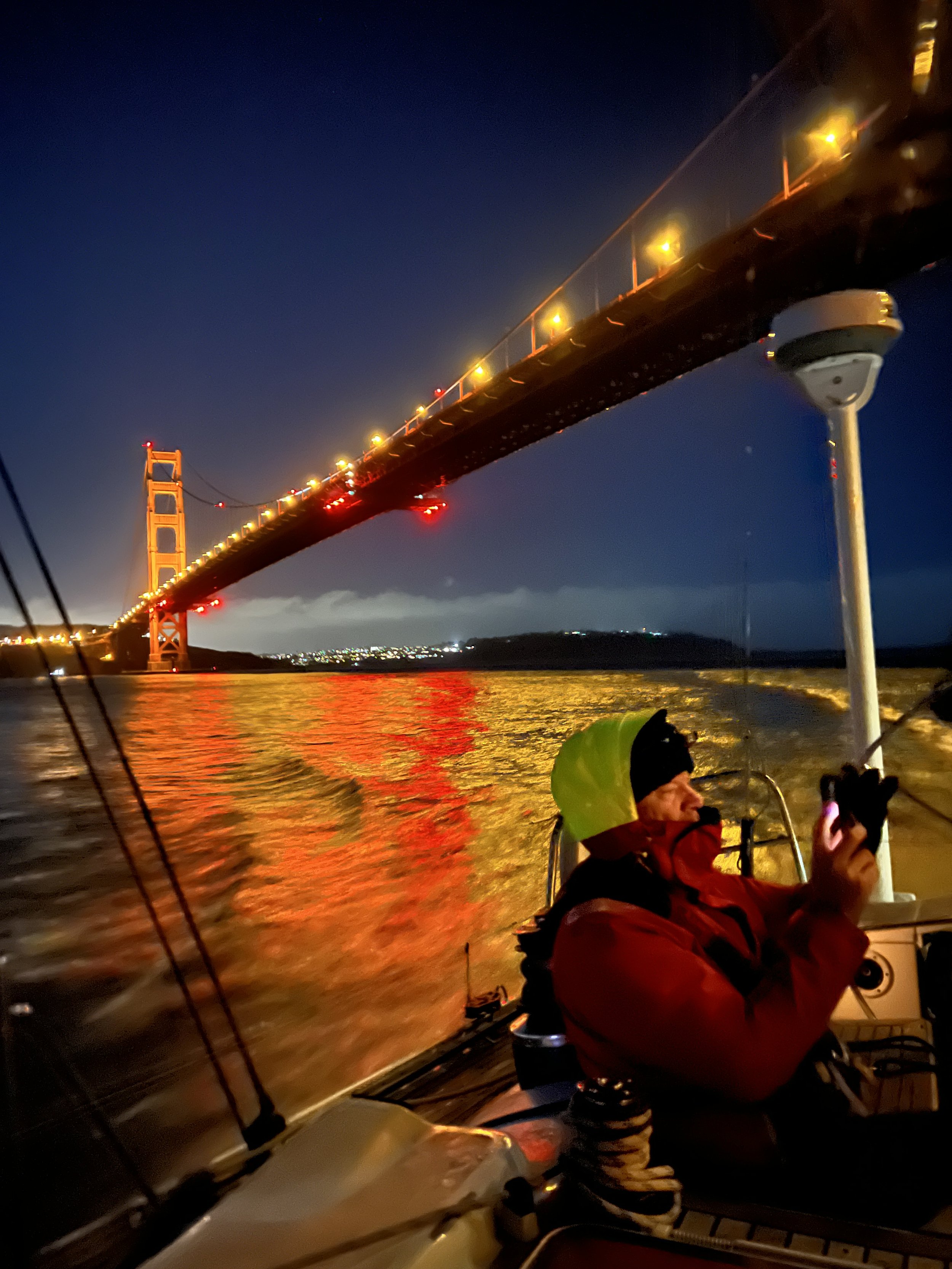Atalanta: Refitting a Modern Classic - Part 3 of 3
After 9 months of steady progress, we work towards a successful launch with a flurry of last minute jobs to complete.
Moving to our next big task, we found that several components of the steering system including the rudder and rudder bearing were suspect, so we opted to drop the rudder out of the boat while hauled out at KKMI in Richmond.
Rudders are a source of worry and occasional grief on long passages, and again it was fortunate we did this because we discovered that the bearing was badly corroded and needed replacement before the boat could safely be sailed. This turned into an epic battle to get the rudder out without damaging the rudder post or hull, which Gilles and his crew eventually did through might and force of will.
Removing the rudder was no small task
Major corrosion problems
We replaced the bearing with a Jefa composite bearing from Denmark and while we were at it, replaced the quadrant and re-led some of the steering cables to make them fair. The rudder itself seemed ok but did have water in it, which we drained and patched up.
We put the rudder back in but later discovered that it has become slightly asymmetric and given its age, now should be replaced. Larry Tuttle at Waterat is designing and building a new carbon rudder and post, which should make the boat handle much better and will give us peace of mind in big wind and seas offshore.
New composite Jefa bearing
Remains of the original bearing
As the boat had not been sailed much in recent years, there were many components on deck that needed attention. Some of the blocks were seized, and while we were able to disassemble and salvage most of them, the traveler did not appear at all up to the task.
Gilles removed the old track and replaced it with a new Harken traveler track and cars, painstakingly building G10 backing plates for every bolt and creating custom parts to ensure lines would not wrap around the ends of the traveler track. He also replaced our corroded double foot blocks and preserved the original coamings, bringing them back to life with a new coat of glossy paint. We cannot say enough about his attention to detail.
Original traveler car
New Harken dual car traveler and track with custom composite spacers
An unexpected project was the anchor locker, where we found areas of water intrusion and a number of past repairs that were not aging well. Denis spent many days pretzeled in the locker, grinding, filling, sanding and painting, until we were left with fully functioning anchor and windlass, navigation lights, and raw water plumbing for deck washdown.
Some of the clever original features of the boat had been abandoned over the years, and we felt they were worth bringing back to life. The lee board for the aft cabin, for example, and the table for the aft cockpit were both resurrected and installed with new custom stainless hardware. The original 1980s microwave oven still worked fine and Denis fastened it neatly into the galley. Chuck and I like its vintage flair.
Resurrected cockpit table
Along with the stack pack conversion, we added bags in both cockpits for sheet tails and guest gear including beverage bottles, and mesh bags on deck for halyard tails and reefing lines.
Line bags with built in drink holders
Keeping lines tidy at the mast
And finally in July of 2021, nearly one year and 2.5x the original purchase price later, Atalanta was ready to be pressed into service. It had taken nine months before we had even been able to sail her for the first time, but when we did it was pure delight. On a breezy San Francisco Bay day in late May, she knocked down the chop with ease and gave a glimpse of her capability as a blue water voyager.
Rechristening ceremony in Point Richmond, California
Gilles and crew - let the celebration begin!
Mainsail up for the first time!
Magical first trick at the helm
Decidedly not a marina queen, Atalanta was built by McGaffin Brothers Boat Builders in New Zealand for high latitude ocean sailing. To give a sense of the dimensions of her components, the engine shaft is 1.75” in diameter spinning a 27” 3 blade Martec feathering prop, and the main bulkhead is 9” thick.
She motors comfortably at 8 knots, and her maximum theoretical hull speed is just under 10 knots (top speed so far 16.6, although the previous owner reported top speeds over 20). The bottom batten of the fully battened mainsail is 22’ long and the Spectra offshore main weighs in at over 100lbs.
Gilles and team meet delivery crew for inaugural trip to Monterey
Blasting across Monterey Bay
When we finally brought her to Monterey on a windy delivery in the summer of 2021, she effortlessly clocked 12-13 knots on the slide down the coast. She then immediately began charters and has since introduced hundreds of people to the beauty of sailing offshore and on Monterey Bay.
New home at last, Monterey, California
Same name, updated graphics
From Monterey, Atalanta has traveled back up to San Francisco several times and down the coast on multiday adventures to Santa Barbara. Soon, in additional to her local excursions on Monterey Bay, she will point her bow south to the Channel Islands, Mexico, Hawaii and beyond. For more information on these and other offerings, please see www.shearwatersailing.net.
Offshore clients celebrate a successful return voyage from Santa Barbara
Family fun for all ages and abilities
At home on Monterey Bay
Night passage under the iconic Golden Gate Bridge
Helmsman Dean
It was a long and arduous process, but in the end Atalanta has proven to be perfectly suited for the types of charters I envisioned. I now have the right tool for the job, at a fraction of the cost of what such a boat would cost to purchase new. Follow Shearwater Sailing on Instagram @shearwatersailing and I look forward to seeing you on the water!
Farr 53 Atalanta, Monterey Bay
